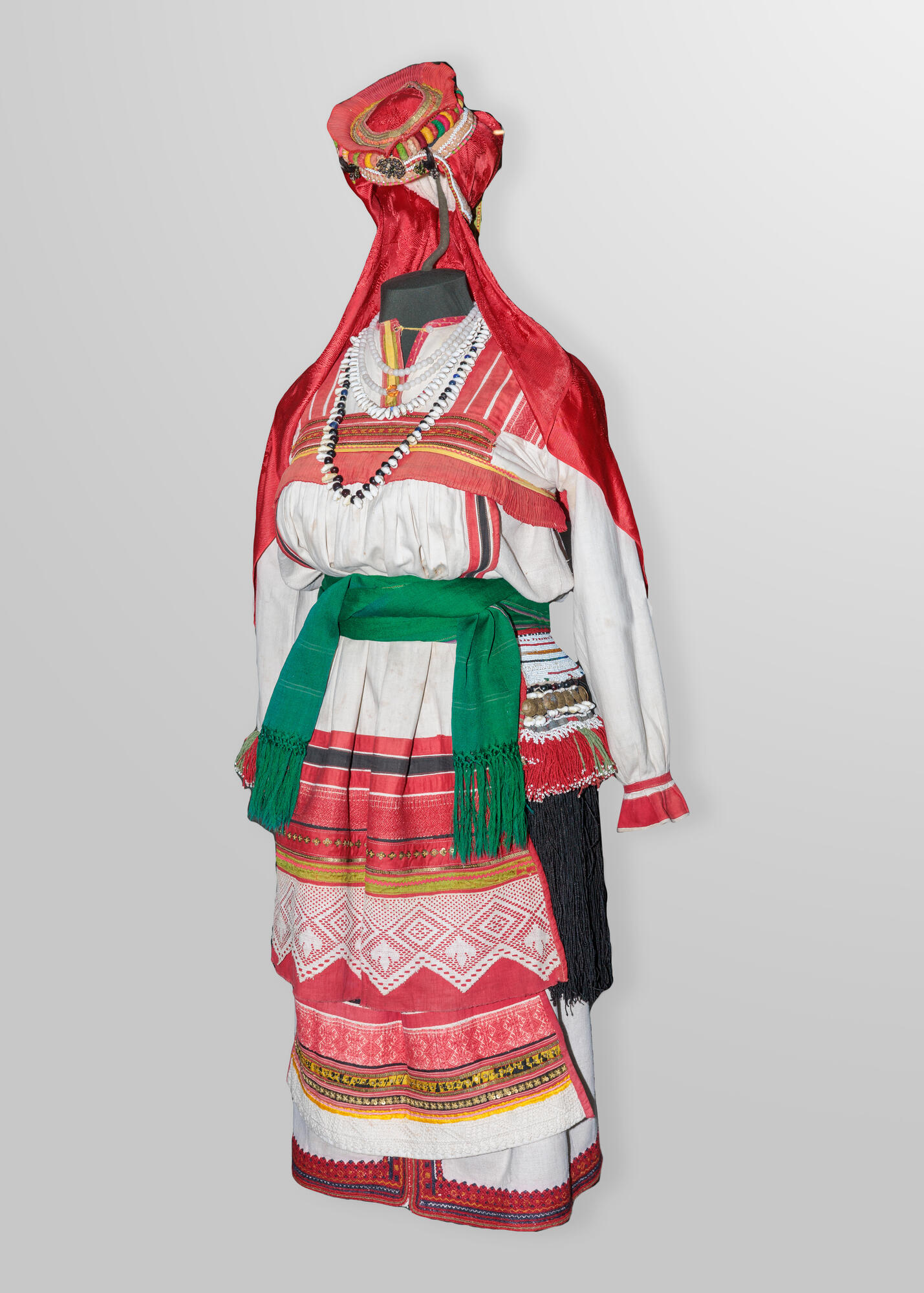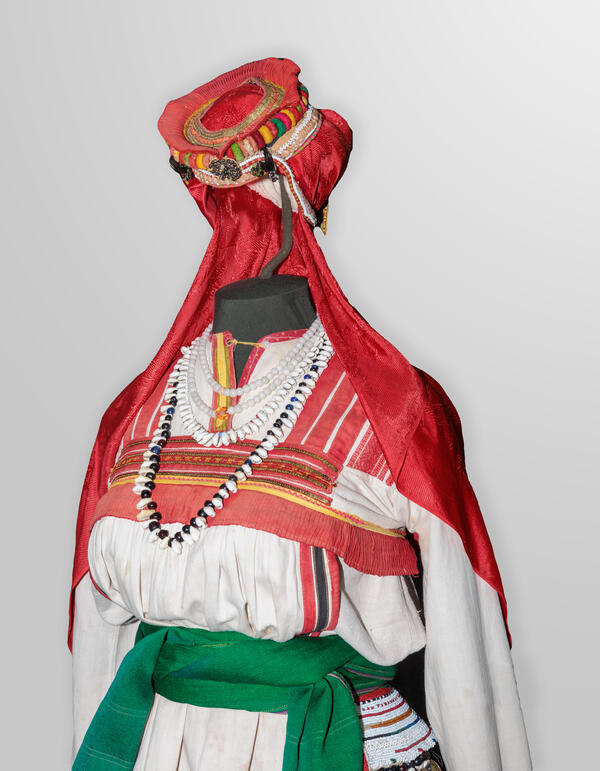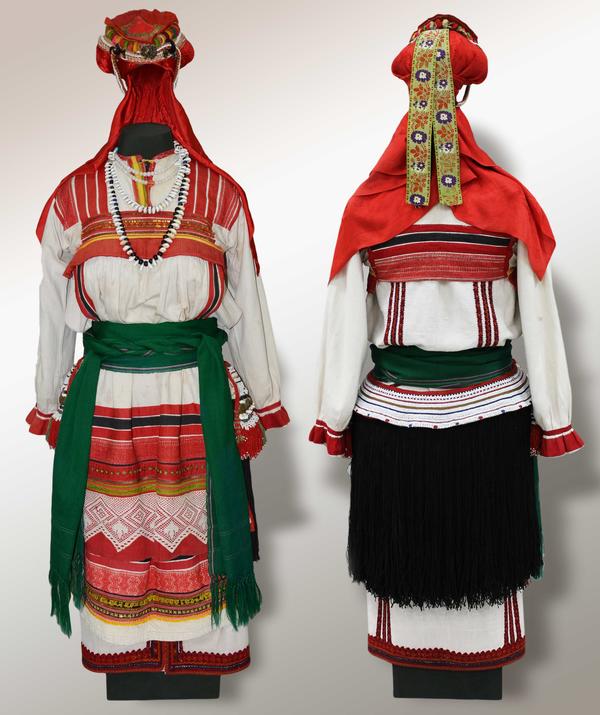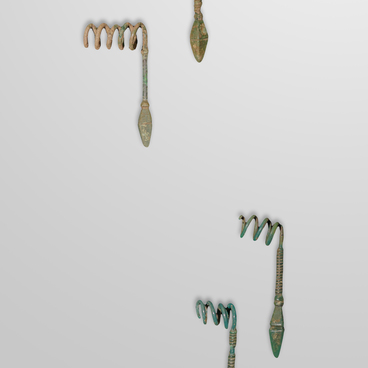The national Mordovian costume evolved in the central zone of the European part of Russia. The environmental and climatic conditions of living, as well as the economic activity of the people were the determining factors in developing the whole set of the national costume, which included undergarments and light outerwear as well as a set of warm demi-season and winter clothes.
The basis of the Erzya and Moksha costumes was a white canvas shirt — panar, decorated with embroidery. The cut of the clothes, the quality of the canvas, the decorative motifs and the coloring of the embroidery identify the local group to which the folk costume in the museum collection belongs. For example, an Erzya shirt was sewn from two cloths, which were folded in half. In the middle, along the central seam, slits were left for the neck and on the hem — for walking, sleeves were sewn into the side seams.
The costume on display is an outfit of a girl, as evidenced by the headdress. Unmarried girls braided their hair into one braid and wore a headband — patsya konya, which is a small rounded cap with an open top.
A great role in creating the silhouette was played by a peculiar hip adornment — pulai (pulogai). A woman started wearing it as a teenage girl at the age of 13 or 14 and continued to wear it until her death. In this region, the pulai was especially puffy in form and accentuated the hips, increasing their size.
The traditional element of the costume of this group was an apron without a bib — ikelga patsya. In the 1920s, a closed apron with sleeves — rukavat appeared everywhere.
As for jewelry, they wore a syulgam clasp (it fastened the deep neckline of the shirt and, of course, served as a talisman), necklaces made of coins, beaded strings and bands. The main color of the embroidery on the shirt is red-brown. The embroidery is very dense, carpet-like, and embossed in texture. The geometric pattern consists of laconic lines, dots, and shapes.
The artistic appearance of the festive costume of a young Erzya girl amazingly vividly emphasizes its life-affirming element. Smooth textile draperies, solemn and festive coloring of the decor create the image of a blooming and vivacious Erzya girl.
The basis of the Erzya and Moksha costumes was a white canvas shirt — panar, decorated with embroidery. The cut of the clothes, the quality of the canvas, the decorative motifs and the coloring of the embroidery identify the local group to which the folk costume in the museum collection belongs. For example, an Erzya shirt was sewn from two cloths, which were folded in half. In the middle, along the central seam, slits were left for the neck and on the hem — for walking, sleeves were sewn into the side seams.
The costume on display is an outfit of a girl, as evidenced by the headdress. Unmarried girls braided their hair into one braid and wore a headband — patsya konya, which is a small rounded cap with an open top.
A great role in creating the silhouette was played by a peculiar hip adornment — pulai (pulogai). A woman started wearing it as a teenage girl at the age of 13 or 14 and continued to wear it until her death. In this region, the pulai was especially puffy in form and accentuated the hips, increasing their size.
The traditional element of the costume of this group was an apron without a bib — ikelga patsya. In the 1920s, a closed apron with sleeves — rukavat appeared everywhere.
As for jewelry, they wore a syulgam clasp (it fastened the deep neckline of the shirt and, of course, served as a talisman), necklaces made of coins, beaded strings and bands. The main color of the embroidery on the shirt is red-brown. The embroidery is very dense, carpet-like, and embossed in texture. The geometric pattern consists of laconic lines, dots, and shapes.
The artistic appearance of the festive costume of a young Erzya girl amazingly vividly emphasizes its life-affirming element. Smooth textile draperies, solemn and festive coloring of the decor create the image of a blooming and vivacious Erzya girl.




